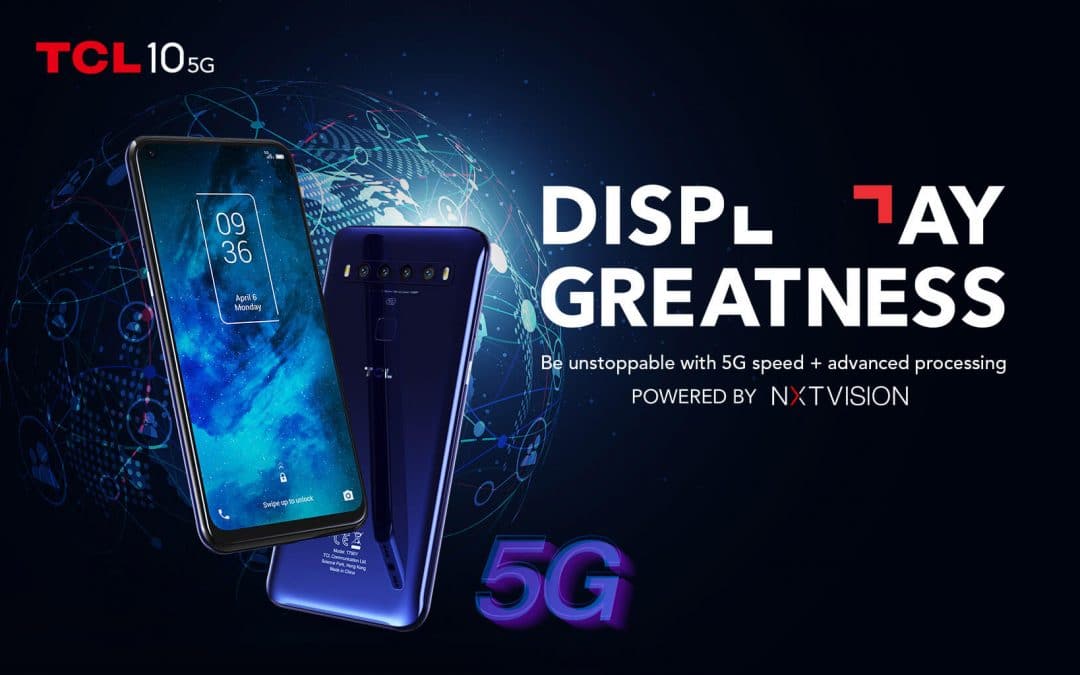By Ernst Wittmann, Global Account Director MEA & Country Manager – Southern Africa, at TCL Communications
Telecom operators around the world—including South Africa— are accelerating their rollout of 5G, the fifth generation of mobile technologies. The new mobile network technology is vital in providing faster mobile broadband speeds and lower latencies, offering a smoother and better Internet experience to mobile users.
Telecom infrastructure company, Ericsson, expects the global number of 5G subscriptions to reach 2.6 billion by 2025. Yet adoption rates in Africa are not expected to be as fast as in Asia, North America or Europe. Statista forecasts that 5G will account for only 3% of total mobile connections in sub Saharan Africa by 2025.
Along with delays in licensing spectrum and the costs of infrastructure investment, one of the more significant obstacles to mass adoption of 5G in South Africa is the cost of the handset. With the cheapest 5G smartphones coming in at around R10,000, they are priced beyond the means of the average user in South Africa.
This, in turn, means that adoption of 5G services will remain low because South Africa is a mobile-first Internet market. Figures from StatsSA show that nationally, mobile devices are the most common way of accessing the Internet. Around 60% of homes had Internet access using mobile devices in 2018.
ICASA, meanwhile, reports that South Africa’s smartphone penetration climbed to over 90% in 2019, up from 81.7% in 2018. It’s worth noting that some people may own more than one device, bumping this number up, but it remains impressive nonetheless.
When will cheaper 5G devices start arriving?
This growth has been driven by the influx of cheap and mid-range smartphones over the past five years—even with a weak rand, devices that offer a good user experience, a decent-sized screen and solid performance are affordable to the wider market.
The key to driving 5G adoption in South Africa will therefore lie in making good 5G handsets affordable as soon as possible. The question is how quickly we can expect to see 5G cascade from expensive flagship models to low-end and mid-range devices, in much the same way as features such as LTE, GPS and cameras did before it.
There are some promising developments in the market. Chipmakers like Qualcomm are starting to introduce 5G in their chipsets for entry-level phones, for example. This will clear the way for more affordable 5G handsets to start arriving from as early as next year—ones that could sell at retail for significantly less than R10,000.
The arrival of mass market 5G smartphones will be central in enabling mobile network operators to unlock a return on investment from their 5G networks by driving more data usage. Perhaps even more importantly, they will enable people who don’t have access to fibre to enjoy a better Internet experience.
How 5G changes the user experience
What difference will 5G make for you as a smartphone user? Some estimates are that 5G could deliver connections that are 10 to 20 times faster than 4G in a real-world setting. This will make a real difference for applications such as ultrahigh definition video streaming and conferencing, and streaming of online games.
5G will also help ease network congestion, so that users in more crowded urban settings can get a faster and more reliable connection. Another benefit will be that you’ll be able to get snappier response and smoother performance from cloud applications like console-quality games or 4K video.
Perhaps as importantly, 5G will support richer cloud-based productivity, education and telemedicine applications in the years to come, supporting the more digital and remote ways of living and working we have embraced during the pandemic. It could open access to digital services in many regions where it is too difficult or expensive to roll out fixed-line infrastructure.
Initially, the technology may make a difference only to early adopters who are already trying out 4K video streaming and virtual reality. But give it a few years, and we’ll take it for granted. As the world moves towards more video and more streaming from the cloud, 5G devices and services will be essential to making digital platforms available and accessible to the wider market.


